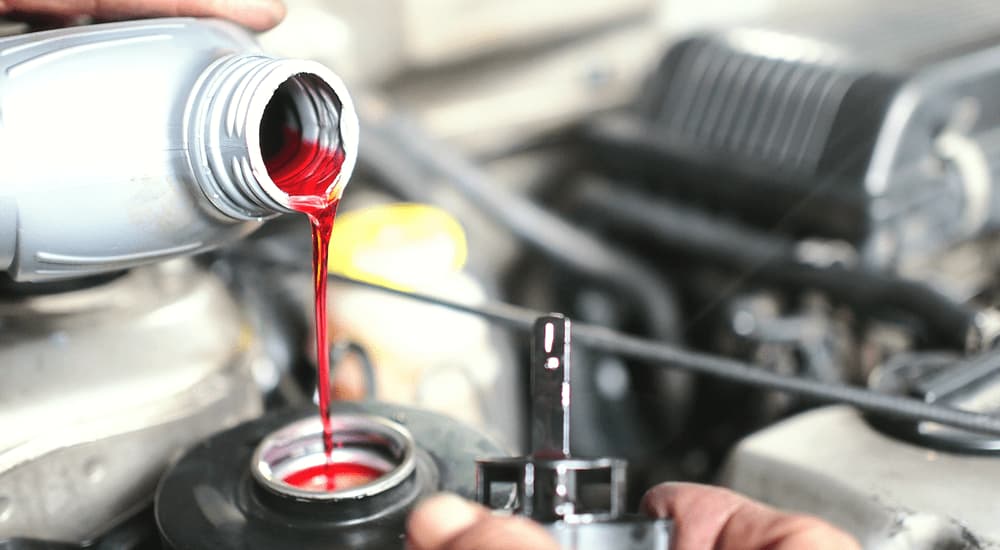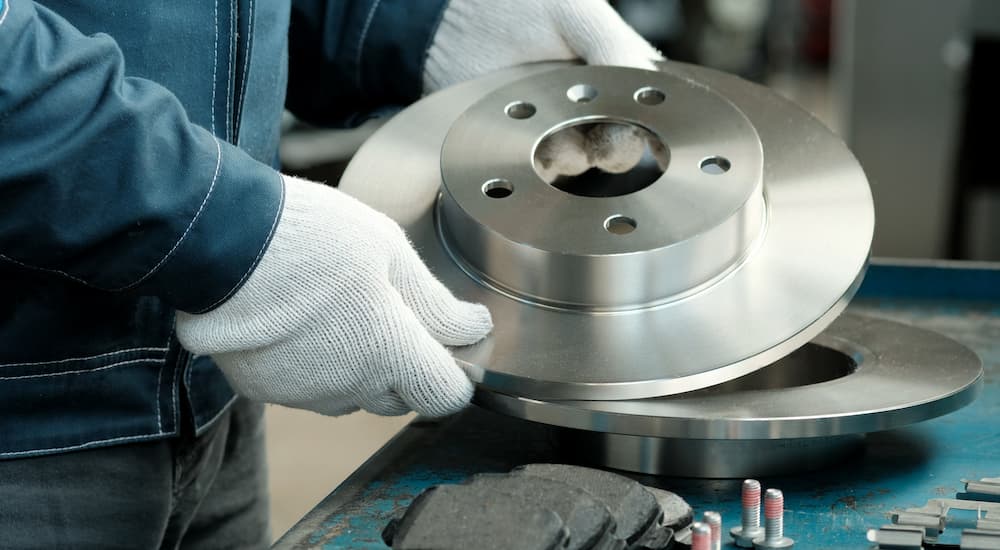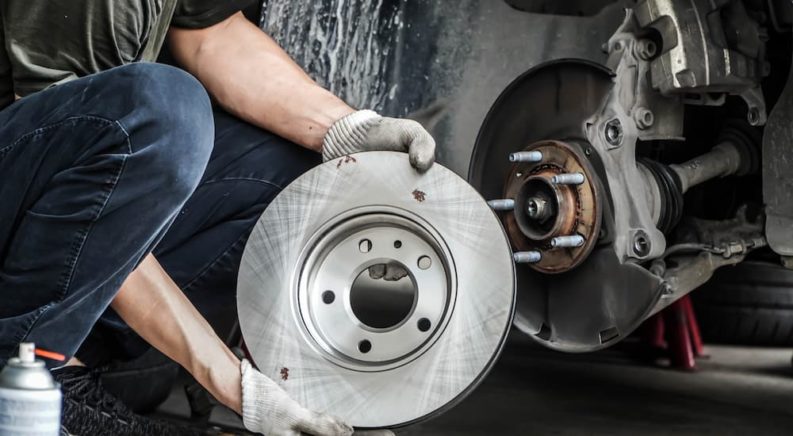If I had to choose the single-most-important part of your vehicle, I’d choose two: the tires and the brakes. While your tires are essential for staying in control of your vehicle, this becomes a bit less important if you can’t safely stop your vehicle – so it’s really a tie between the two. The key to ensuring your brakes work properly every time you press the brake pedal is taking care of proper brake service for your vehicle. While you don’t need to know everything about your brakes to have them properly maintained, it’s a good idea to know the essentials so that you understand what someone is doing to your vehicle.
Like any other part of your car, you can work on or service the brakes yourself, but you better know exactly what you’re doing. The brakes are vital for you to be able to drive safely and it’s pretty easy for something to go wrong when working on them, especially if you plan on taking apart the brake assembly to see every component in it. That’s why you should let a professional that you can trust handle your brake service unless you absolutely know what you’re doing and have some experience working on it. Either way, it’s a good idea to know common types of services to ensure they’re done properly.
Checking Your Brake Line/Fluid
Brakes function through hydraulic pressure: you press the brake pedal and this pushes a master cylinder, which then transfers that force you apply to other cylinders throughout your brake system to amplify your efforts and bring your vehicle to a stop. In order for this system to work properly, the fluid in your brake lines needs to be clean and properly sealed. One of the most common types of service you should have done, or perform yourself, is an inspection of your brake lines to ensure there aren’t any leaks or other issues. The fluid within the brake line can also be checked to ensure it’s still in good condition.
Bleeding the Brake Line
If an issue is found with your brake line or fluid, then there can be several possible solutions that need to be handled. Bleeding the line is one of the simplest and most common types of brake service for minor issues with the hydraulic brake system. This involves removing air bubbles that can build up in the line, reducing the effectiveness of your vehicle’s brakes. Bleeding is typically done by draining the brake line and refilling it with fresh fluid.
Replacing Your Brake Fluid
Even if air bubbles aren’t found in your vehicle’s brake line, it may be necessary to completely replace the fluid within it. Brake fluid is engineered to be heat resistant so that it doesn’t boil and create gas while maintaining high pressure for a long time. Through everyday use, however, the fluid will inevitably get dirty and become less efficient – if your brakes feel soft or take longer to stop your vehicle, this might be why. Flushing out the old fluid and replacing it with fresh brake fluid is the solution when this happens.

Thorough Brake Inspection
One of the most common types of brake service is a simple but thorough inspection of every part of the brakes beyond the lines and fluid levels. This is done with the car lifted up, so it’s often performed simultaneously with other services like changing your oil or rotating your tires. If you have the equipment to safely lift your vehicle and do any of this work yourself, then it’s a good idea to check your brakes and make sure everything looks alright on a regular basis.
Brake Pad/Shoe Replacement
If a problem is detected, one of the most common repairs is replacing the brake pads or shoes – depending on whether it’s a disc or drum braking system. Disc brakes feature a rotor (or disc) attached to a vehicle’s wheel; when you hit the brakes, pads press against the rotor to stop it and slow you down. Drum brakes function similarly but have a drum unit connected to the wheels; shoes within the drum apply force when you hit the brakes and bring you to a stop. These pads and shoes do a lot of work and take a lot of abuse: every time you slow down you’re wearing them out and damaging them through friction. They’re designed to handle this heat and abuse, but they’ll wear out over time. Replacing the pads and shoes is relatively simple, inexpensive, and a common part of routine maintenance.
Brake Rotor/Drum Service
While the pads and shoes take the most abuse from your braking, the rotor and drum will also wear out over time. At some point, you’ll need to replace the rotor or drum on your brakes. While it can be tempting only to replace one part, this is an expensive and long process that’s typically not the ideal solution for brake issues. Taking a brake assembly apart and putting it back together with a new rotor isn’t easy and it’s common for improper reassembly to create bigger problems. That’s why it’s usually better to go for a…

Full Brake Replacement
Rather than try to take the brake assembly apart to replace the rotor or drum, put it back together properly, and then reattach it to the vehicle, it’s usually better to simply replace the entire brake assembly. The difference in cost is pretty minor, especially since any shop will charge you quite a bit to take apart and reassemble the braking system. Even if you’re doing it yourself, you’re usually better off doing a full replacement than trying to take your brakes apart and ensure you get it back together again properly.
Master Cylinder Cleaning/Replacement
The master cylinder that I mentioned earlier, which applies hydraulic pressure to the rest of the system, is designed to last through the lifetime of your vehicle. That being said, it can get gunked up with dirt and debris while in use, especially if you go a while without changing your brake fluid. It’s not entirely uncommon for it to need to be removed and cleaned off, then reinstalled during service. Replacing the master cylinder can also be necessary for an older vehicle – at some point, everything wears out – but it is less common than an overhaul.
Anti-Lock Brake Service
Modern vehicles have anti-lock brake systems (ABS) designed to apply rhythmic pressure to your brakes so that you don’t have to manually pump them while braking in conditions that can result in fishtailing or hydroplaning. For your vehicle’s ABS to work properly, however, sensors and a computer module detect when it’s needed and engage it for you. The sensors and module will need to be replaced occasionally; your vehicle probably has a dedicated ABS warning light to tell you when something’s wrong with it.
When to Have Brake Service Performed
When it comes to proper brake service, one of the most common questions is, “How often do I need work done?” There’s no simple answer to this, but you should generally look at your vehicle’s owner’s manual and service schedule to see what the manufacturer recommends. With that in mind, remember that your driving habits will affect this: if you ride the brakes, spend a lot of time in stop-and-go traffic, or use your vehicle for deliveries or a ride-share service, you’ll need to have your brakes serviced more often. This is why it helps to have your brakes checked (or check them yourself) when other work is done or if you hear or feel something off about them. Keeping your brakes in good shape is the only way to safely stop your vehicle and stay in control, which is what car maintenance is all about.

